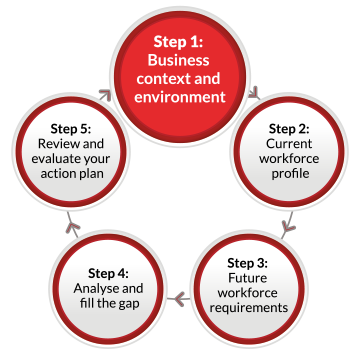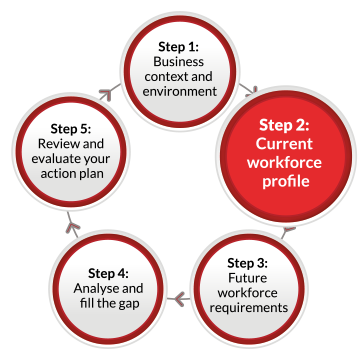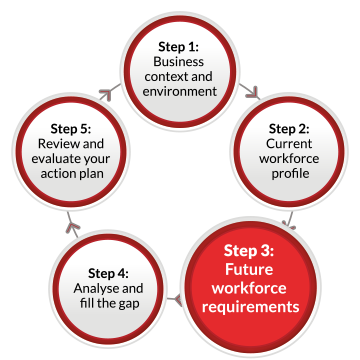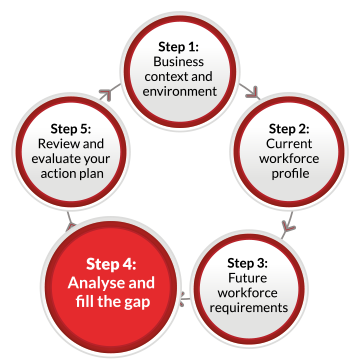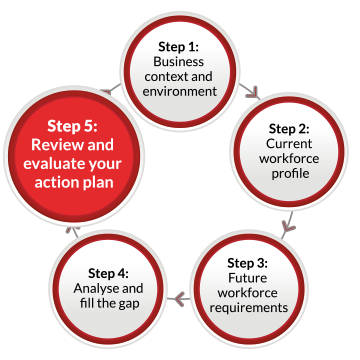Workforce planning is a process, and as with any other process it is helpful to look at it as a series of steps ~ each with an output that leads towards successful completion.
The five step planning cycle presented here can support and guide you through the process of developing your own Workforce action plan to help you meet your changing workforce needs.
Each step is explored in detail, with questions, suggestions and links to additional information and resources provided as you progress.







